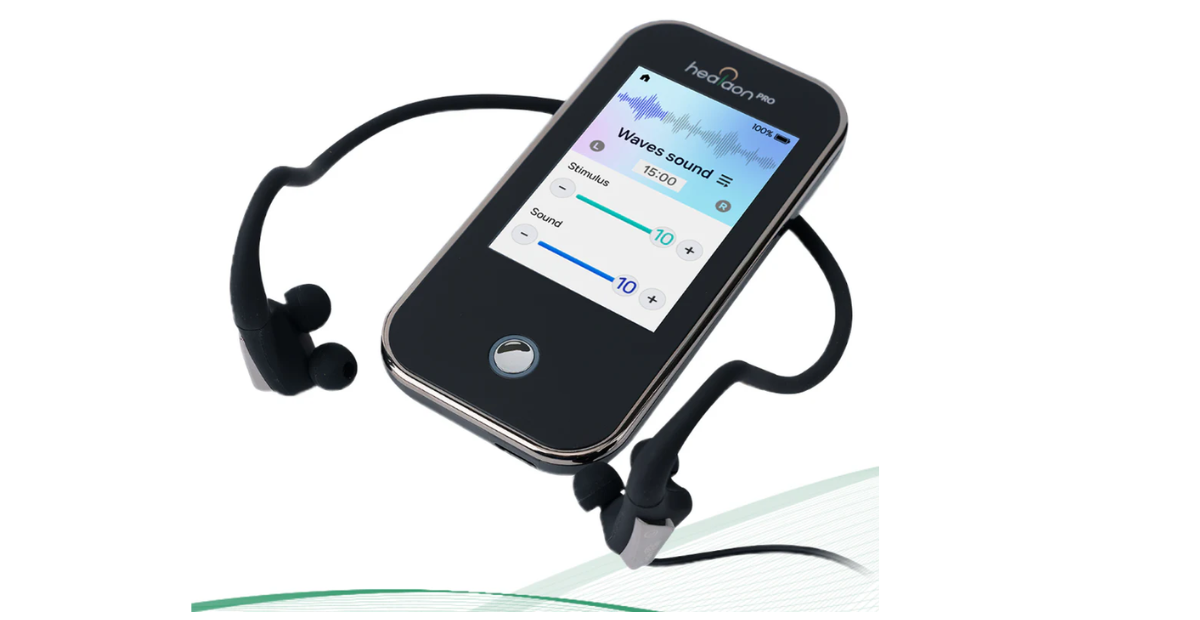Have you ever felt your heart race after finishing a meal? For some, this isn’t just a normal digestive response, it’s a sign of vagus nerve tachycardia after eating, a condition where the heart rate spikes due to vagal nerve dysfunction. Understanding why this happens helps you manage symptoms and support your body’s natural rhythm.
If you often feel anxious after eating or notice your heart pounding, you’re not alone. This guide explores how your vagus nerve, digestion, and heart rate are connected, and what you can do to restore balance and comfort.
What Is the Vagus Nerve and Why Does It Matter?
Before we dive into the heart’s response to eating, it’s important to understand the vagus nerve itself.
The vagus nerve is the longest cranial nerve in the body, running from the brainstem through the neck, chest, and abdomen. It’s a crucial part of the parasympathetic nervous system, responsible for controlling “rest and digest” functions.
Think of it as your body’s communication bridge, linking your brain to your heart, lungs, and digestive tract. When functioning properly, it helps slow your heart rate, promote digestion, reduce inflammation, and regulate mood.
Main functions of the vagus nerve include:
|
Function |
Role in the Body |
|
Heart rate regulation |
Keeps heartbeat stable and balanced |
|
Digestion control |
Moves food through intestines efficiently |
|
Stress reduction |
Activates the “rest and digest” state |
|
Inflammation control |
Supports immune balance |
When the vagus nerve is irritated or underactive, these systems can go off balance, especially during digestion.
Understanding Vagus Nerve Tachycardia After Eating

Post-meal heart racing, or vagus nerve tachycardia after eating, refers to a rapid heartbeat that occurs shortly after a meal. Normally, your heart rate increases slightly as your body directs blood to the digestive organs. However, when this increase is excessive, it suggests an imbalance in vagal control.
A normal post-meal rise might be 10–15 beats per minute, but in those with vagus nerve dysfunction, heart rate can exceed 120 beats per minute. This can feel like palpitations, dizziness, or even anxiety.
It’s not always dangerous, but it can significantly affect the quality of life. People with autonomic disorders, such as Postural Orthostatic Tachycardia Syndrome (POTS) or vagus nerve irritation, often report similar experiences.
How the Vagus Nerve, Heart, and Digestion Interact
During digestion, your vagus nerve coordinates multiple processes: expanding the stomach, releasing digestive enzymes, and managing blood flow to the intestines. It helps maintain balance between your parasympathetic and sympathetic nervous systems.
When this balance is disrupted, due to stress, large meals, dehydration, or underlying nerve issues, the heart rate can increase abnormally. This is known as autonomic dysregulation.
|
Trigger |
Effect on the Vagus Nerve |
Possible Outcome |
|
Large meals |
Stomach distension |
Overstimulation or irregular signals |
|
High-carb foods |
Rapid glucose spikes |
Tachycardia and dizziness |
|
Stress or anxiety |
Increased sympathetic response |
Elevated heart rate |
|
Dehydration |
Reduced blood volume |
Heart works harder post-meal |
Common Causes and Contributing Factors
There’s no single cause of vagus nerve tachycardia after eating. Instead, multiple triggers and underlying conditions can overlap, affecting how your body regulates digestion and heart rate.
1. Digestive Triggers
-
Gastric distension: Overeating or excessive gas causes the stomach to expand, placing pressure on the vagus nerve. This overstimulation can send confusing signals that make the heart race.
-
Acid reflux: Stomach acid that irritates the esophagus may interfere with nerve signaling, triggering irregular heart rhythms after meals.
-
Heavy or rich meals: Fatty or high-carb foods require more blood flow and energy to digest, which naturally increases cardiovascular activity and may exaggerate heart rate changes.
2. Underlying Health Conditions
-
POTS or dysautonomia: These conditions involve an overactive sympathetic nervous system that competes with vagal control, leading to post-meal heart rate surges.
-
Diabetes or neuropathy: Nerve damage can disrupt communication between the vagus nerve and internal organs, impairing the body’s ability to stabilize heart rate.
-
Gastroparesis: When digestion slows, food lingers in the stomach longer, heightening discomfort and vagal strain.
3. Lifestyle and Dietary Factors
-
Caffeine or alcohol: Both can overstimulate the heart and reduce vagal tone, intensifying tachycardia symptoms.
-
Dehydration: Low fluid volume forces the heart to work harder to circulate blood.
-
Stressful meals: Eating while anxious or rushed limits vagus nerve engagement and weakens the calming “rest and digest” response.
Symptoms to Look Out For
Recognizing the symptoms of vagus nerve tachycardia after eating is key to managing it effectively. While occasional mild reactions are normal, consistent or intense symptoms can indicate an imbalance in how your vagus nerve and cardiovascular system communicate.
Typical symptoms include:
-
Rapid heart rate (over 100 bpm) within 15–60 minutes after meals, especially after large or heavy portions.
-
Heart pounding or fluttering sensations, often described as skipped beats or palpitations.
-
Dizziness or lightheadedness, which can occur as blood shifts to the digestive organs, reducing circulation to the brain.
-
Chest pressure (not sharp pain) that may feel like tightness or heaviness rather than a stabbing sensation.
-
Fatigue or nausea, as the body diverts energy to digestion and struggles to maintain stable blood pressure.
-
Shortness of breath or feeling overheated, common when the nervous system is overstimulated.
-
Anxiety after meals, often caused by the body’s stress response to rapid heart rate or internal discomfort.
These symptoms may fluctuate depending on what or how you eat, your stress levels, and existing conditions like POTS, acid reflux, or gastroparesis. Keeping a symptom journal can help identify patterns, such as specific foods or meal sizes that consistently trigger reactions.
⚠️ Seek emergency care if you experience severe chest pain, fainting, or heart rates above 150 bpm that don’t settle with rest.
Diagnosis: How Doctors Identify the Issue
If you frequently experience these symptoms, your doctor may perform:
-
Heart rhythm monitoring (Holter or ECG): Tracks heart rate changes post-meal.
-
Blood tests: Checks thyroid, electrolytes, and glucose levels.
-
Tilt table test: Assesses autonomic function if POTS is suspected.
-
Echocardiogram: Evaluates heart structure and rule out cardiac issues.
Keeping a food and symptom journal can also help identify patterns, what meals or conditions trigger your symptoms most.
How to Manage and Prevent Vagus Nerve Tachycardia After Eating
Effective management blends dietary adjustments, lifestyle changes, and sometimes medical guidance.
1. Dietary Tips
-
Eat smaller, frequent meals instead of large ones.
-
Limit sugary and processed foods that cause blood sugar spikes.
-
Stay hydrated—drink water 15–30 minutes before eating.
-
Avoid caffeine, alcohol, and high-histamine foods like aged cheese or wine.
2. Adjust Eating Habits
-
Eat slowly and chew thoroughly.
-
Sit upright during and after eating (avoid lying down).
-
Create a relaxed environment, practice mindful eating.
3. Support Vagal Function
Consider using devices designed to stimulate the vagus nerve. The Neurive Healaon Pro Vagus Nerve Stimulator from Airvida Chambers supports healthy nerve function and may help balance your autonomic response.
You can explore other related tools in our Vagus Nerve Stimulator Collection for ongoing support and wellness.
Lifestyle Approaches That Make a Difference
Managing vagus nerve tachycardia after eating isn’t only about avoiding triggers, it’s also about creating habits that help your body stay calm and balanced. Small daily choices can make a big difference in how your nervous system responds after meals.
1. Move gently and consistently
Engage in moderate exercise such as walking, yoga, or light stretching. These activities boost circulation, strengthen the vagus nerve’s “rest and digest” function, and promote a steady heart rhythm. Avoid intense workouts right after eating, as they may amplify heart rate fluctuations.
2. Prioritize quality sleep
Getting 7–9 hours of restful sleep each night restores autonomic balance and supports your heart’s recovery. A consistent bedtime routine, dim lights, limit screens, and relax before bed, can reduce post-meal sensitivity over time.
3. Manage stress mindfully
Chronic stress weakens vagal tone. Incorporate deep breathing, mindfulness meditation, or progressive muscle relaxation before and after meals. These practices calm the body, regulate breathing, and help prevent nervous system overreaction.
4. Mind your environment
Avoid extreme temperatures during meals, such as very hot rooms or spicy, steaming foods, which can heighten heart rate and dizziness. Eat slowly in a relaxed, comfortable setting to help the body process food efficiently.
Making these adjustments won’t just ease symptoms, it can also improve digestion, energy, and emotional well-being. Over time, these steady, supportive habits encourage your vagus nerve to respond more calmly and consistently after eating.
When to Seek Medical Advice
If symptoms are frequent, intense, or cause anxiety about eating, consult a healthcare professional. Proper testing can rule out serious heart issues and confirm if vagus nerve dysfunction is the cause.
Final Thoughts on Managing Vagus Nerve Tachycardia After Eating
Living with vagus nerve tachycardia after eating can be uncomfortable, but understanding it is the first step toward relief. Small lifestyle changes, like mindful eating, proper hydration, and vagal stimulation, can help regulate your body’s natural rhythm.
If you’re looking for additional support, explore Airvida Chambers’ Vagus Nerve Stimulator Collection to find solutions designed to promote calm, balance, and overall wellness.
By caring for your vagus nerve, you’re supporting the foundation of your body’s communication system, bringing calm to both your digestion and your heart.
Related Reading for Better Understanding
-
Learn more about how the vagus nerve works in What Does the Vagus Nerve Do.
-
Discover practical ways to naturally stimulate your vagus nerve in How to Stimulate the Vagus Nerve.
Frequently Asked Questions
Why do I feel tachycardia after every meal?
You may experience vagus nerve tachycardia after eating because digestion increases blood flow demand, and the vagus nerve may not regulate it properly. Eating large portions or high-carb meals can trigger this reaction, especially if your autonomic system is sensitive or underactive.
What are the symptoms of an irritated vagus nerve?
An irritated vagus nerve may cause heart palpitations, dizziness, nausea, digestive problems, or anxiety after meals. It can also affect breathing and overall calmness. Chronic irritation may require medical evaluation to restore balance in nerve function.
Which eating disorders cause tachycardia?
Conditions like anorexia, bulimia, or binge eating can lead to tachycardia due to malnutrition, dehydration, and electrolyte imbalance. These disorders disrupt the vagus nerve’s ability to maintain stable heart rhythms and digestion.
How do you fix vagus nerve heart palpitations?
You can support your vagus nerve through deep breathing, hydration, smaller meals, and using tools like the Neurive Healaon Pro Vagus Nerve Stimulator. If symptoms persist, medical evaluation is essential to rule out other causes.




